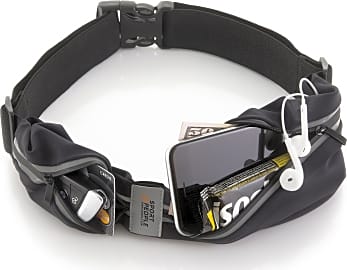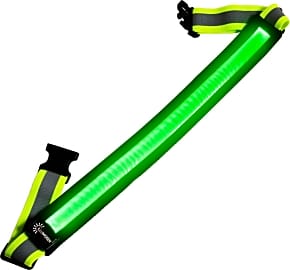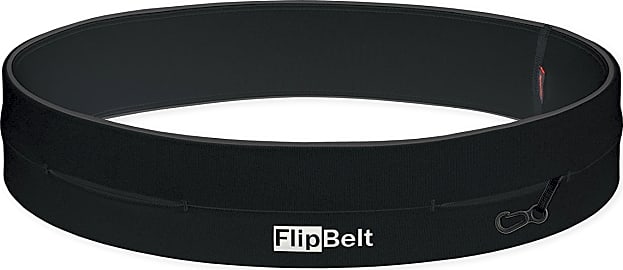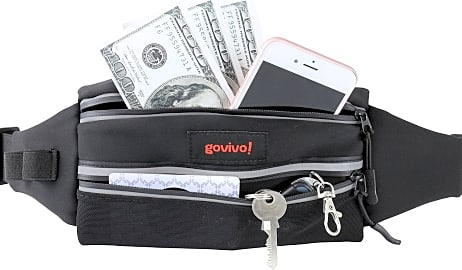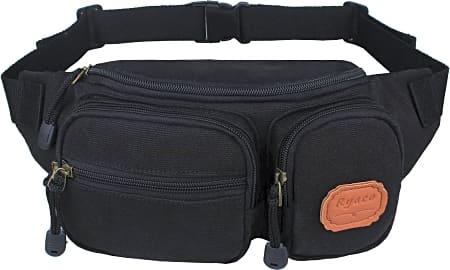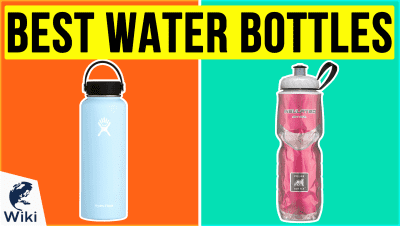The 10 Best Runner's Belts

This wiki has been updated 42 times since it was first published in October of 2015. It may seem unbelievable now, but there was a time when our ancestors would actually go jogging without carrying a cell phone with them. Anthropologists still aren't sure how they managed it, but, luckily, you'll never have to find out for yourself, thanks to these running belts. They'll hold your phone, keys, water bottle, and more, so you can focus on pounding the pavement. When users buy our independently chosen editorial recommendations, we may earn commissions to help fund the Wiki.
Editor's Notes
April 20, 2020:
Three items were no longer available, which led to their removal: the Nathan Trail Mix, FinBurst Adjustable and B4B Waist Pack. Through our review of the remaining items, we learned that the elastic band on the Govivo Pack tends to stretch out over time, which we’ve noted in the bullets. We also dropped it in the rankings.
While running belts come in a variety of styles, one of the key distinguishing factors is their ability (or inability) to accommodate water bottles. Long-distance runners who frequently train for competitive races like marathons or half-marathons are more likely than casual joggers to require storage space for a hydration flask. Of our three new additions, two of them (the Urpower Fanny and Runtasty Fuel) can hold two small water containers.
The E Tronic Edge Workout’s adjustable strap makes it suitable for a wide range of individuals, from thin athletic types to heavyset folks with waists sizes up to 46 inches. Despite its slim, minimalist design, users seem to appreciate its ability to comfortably hold large smartphones.
Night owls and early birds who typically run in low-light conditions may want to keep an eye out for another key feature: reflective strips. The Illumiseen Reflective is designed for this purpose specifically, while the Peak Pouch, Sport2People Pack, Urpower Fanny and Runtasty Fuel all offer some sort of reflective properties as well.
Special Honors
Naked The Band Competitive runners understand the important role hydration plays in training, which is why this state-of-the-art pack is built to securely store a water flask in a way that doesn’t feel bulky or bouncy. Its breathable mesh fabric dries quickly, and it doesn’t contain any snaps or buckles that could come undone during a run. nakedsportsinnovations.com
Aduro Sport Backed by a limited lifetime warranty, this rugged belt accommodates most smartphone models and provides easy access for inserting earphones, adjusting the volume or changing the song. Reflective strips appear on the front and rear portions of the band to provide 360-degree visibility. aduroproducts.com
Starwood Belt Simplicity — in both function and appearance — is what makes this such an appealing option. From a UK-based producer of fitness products, this stretchable pack is available in three sizes and multiple colors, with several individual pockets for keeping your essentials organized. starwoodsports.com
Different Strokes For Different Folks
If you're a middle-distance runner who does a lot of interval training, a streamlined belt without any holsters may be more your style.
Choosing a running belt has a lot to do with what type of runner you are. If you're an ultra-marathoner, for example, then you'll probably want a belt that can accommodate protein bars, a pair of water bottles, personal identification, and some electrolyte gels. If you're a middle-distance runner who does a lot of interval training, a streamlined belt without any holsters may be more your style.
Adults who run with strollers may consider a running belt that allows them to bring along snacks, or maybe even a toy, for their children, whereas people who are always on call might want a belt that provides a cushioned pocket for safely storing their phones. If you plan on running outdoors, make it a point to confirm that any belt's material is waterproof. If you plan on running in any punishing conditions, make sure that a running belt is weather-proof, as well.
The harder your workouts, the more important it will be to confirm that a running belt's pouches can be sealed, and that any water bottles can be locked in or otherwise tethered to your side. If you find that certain items along a belt are brushing up against your abdomen, then simply swivel the belt around until none of its compartments can be affected by your stride.
Basic Advantages To Owning a Running Belt
An average cellphone provides its user with ongoing access to calling, texting, email, music, and a camera, along with a variety of apps that can help any runner set or achieve several personal goals. The issue, assuming that you are a runner, is that a cellphone can be unwieldy. This is where a running belt may come in handy, by offering a padded compartment for any phone, while also protecting that phone from any rain or heat or sweat.
The issue, assuming that you are a runner, is that a cellphone can be unwieldy.
By way of comparison, consider the potential consequences of jogging long distances without a running belt. It's a significant risk to go trail running, for example, without access to a GPS (i.e., a cellphone), a first-aid kit, and potable water. In fact, running in the wilderness without any of these accessories could place you in danger of getting lost, suffering an infection, or becoming dehydrated.
It is worth mentioning that a running belt can also be used for several non-athletic purposes. Adults can use a running belt for saving money whenever wandering along any promenade, amusement area, or other venue where the prices tend to be extremely high. You can keep some snacks inside your belt's compartments, while using public drinking fountains to refill your bottles, free of charge.
How Running Belts Predate Jesus
Belts, as a concept, have been around since The Bronze Age. And running as a form of fitness has been around even longer. That being the case, it seems odd that the first official running belt wasn't invented until 1979. In the patent application for what they called a "canteen belt," three California inventors – Peter Glusker, Walter Fontana, and Mitchell Feingold – described their device as “an adjustable canteen for use by any runner in readily obtaining a drink of water by way of a plastic tube or by hand.”
Obviously, this initial running belt came with its own limitations.
Obviously, this initial running belt came with its own limitations. The belt's canteens were custom-made with foot-long tubes extending out of the lids - a concept which failed to account for the fact that most runners regulate their breathing, rendering it difficult to clamp down on a straw. What's more, these tubes would inevitably wind up dangling around a runner's legs. That is unless the runner stopped to tuck those tubes into the folds.
There have, of course, been innovations over the past four decades, most notably a transition from the all-elastic running belts of the early eighties to the much more functional - and waterproof - nylon and polyester belts of today. A lot of the current era's running belts weigh between 4-8 oz. These belts are generally built with an adjustable holster (for carrying water bottles) and one or more compartments (for keeping personal items padded and safe).
Beyond that, the only major change to a running belt has been the size of its consumer base. According to a recent study, more than 42% of Americans run for fitness on a regular basis. The largest segment of that percentage is represented by women, ages 25-34.



